Constitutionalist Revolution
The Constitutionalist Revolution of 1932 (sometimes also referred to as Paulista War or Brazilian Civil War[1]) is the name given to the uprising of the population of the Brazilian state of São Paulo against the Brazilian Revolution of 1930 when Getúlio Vargas assumed the nation's presidency; Vargas was supported by the people, the military and the political elites of Minas Gerais, Rio Grande do Sul and Paraíba. The movement grew out of local resentment from the fact that Vargas ruled by decree, unbound by a Constitution, in a provisional government. The 1930 Revolution also affected São Paulo by eroding the autonomy that states enjoyed during the term of the 1891 Constitution and preventing the inauguration of the governor of São Paulo, Júlio Prestes, who had been elected president of Brazil in 1930, while simultaneously overthrowing President Washington Luís, who was governor of São Paulo from 1920 to 1924. These events marked the end of the First Brazilian Republic.
| Constitutionalist Revolution | |||||||
|---|---|---|---|---|---|---|---|
| |||||||
| |||||||
| Belligerents | |||||||
|
Constitutionalists
|
Legalists | ||||||
| Commanders and leaders | |||||||
|
|
| ||||||
| Strength | |||||||
|
40,000 soldiers (Police, Army and volunteers) 30 Armored Vehicles 44 artillery 9–10 aircraft |
100,000 soldiers (Army, Navy and Police) 90 Armored Vehicles 250 artillery 58 aircraft 4 Warships (Naval blockade of the Port of Santos) | ||||||
| Casualties and losses | |||||||
|
2,500 estimated dead unknown number of wounded |
1,050 estimated dead 3,800 wounded | ||||||
The Revolution's main goal was to press the provisional government headed by Getúlio Vargas to adopt and then abide by a new Constitution, since Júlio Prestes was kept from taking office. However, as the movement developed and resentment against Vargas and his revolutionary government grew deeper, it came to advocate the overthrow of the Federal Government, and it was even speculated that one of the Revolutionaries' goals was the secession of São Paulo from the Brazilian federation. However, it is noted that the separatist scenario was used as a guerrilla tactic by the Federal Government to turn the population in the rest of the country against the state of São Paulo, broadcasting the alleged separatist threat throughout the country. There is no evidence that the movement's commanders sought separatism.
The uprising began on July 9, 1932, after four protesting students were killed by government troops on May 23, 1932. On the wake of their deaths, a movement called MMDC (from the initials of the names of each of the four students killed: Martins, Miragaia, Dráusio and Camargo) started. A fifth victim, Alvarenga, was also shot that night, but died months later.
In a few months, the state of São Paulo rebelled against the federal government. Counting on the support of the political elites of two other powerful states, Minas Gerais and Rio Grande do Sul, the politicians from São Paulo expected a quick war. However, the expected support did not materialize, and São Paulo's revolt was militarily crushed on October 2, 1932. In total, there were 87 days of fighting (July 9 to October 4, 1932—with the last two days after the surrender of São Paulo), with a balance of 934 official deaths, though non-official estimates report up to 2,200 dead, and many cities in the state of São Paulo suffered damage due to fighting.
In spite of its military defeat, some of the movement's main demands were finally granted by Vargas afterwards: the appointment of a non-military state Governor, the election of a Constituent Assembly and, finally, the enactment of a new Constitution in 1934. However, the new Constitution was short-lived, as in 1937, amidst growing extremism on the left and right wings of the political spectrum, Vargas closed the National Congress and enacted another Constitution, which established the so-called Estado Novo after a coup d'état.
July 9 marks the beginning of the Revolution of 1932, and is a holiday and the most important civic date of the state of São Paulo. The Paulistas (as the inhabitants of São Paulo are known) consider the Revolution of 1932 as the greatest movement of its civic history. It was the first major revolt against the government of Getúlio Vargas.
Opposing forces
According to García de Gabiola, when the revolution began the Paulistas only swayed one of the 8 divisions of the Brazilian Army (the 2nd Division, based in São Paulo), and half of the Mixed Brigade based in the southern part of Mato Grosso. These forces were reinforced by the Força Pública Paulista (the military police of São Paulo state), and the MMDC militias. In all, there were some 11,000–15,000 men at the beginning of the conflict, later joined by thousands of volunteers.[2] In fact, according to authors such as Hilton, São Paulo equipped some 40 battalions of volunteers, but García de Gabiola states that he had identified up to 80 of them, of some 300 men each.[3] At the end, taking into account that in the São Paulo state armory's there were only between 15,000 and 29,000 rifles depending on the source, the Paulistas were never able to arm more than 35,000 men maximum.[4] Additionally, the Paulistas had only 6 million cartridges, failing their attempts to acquire some additional 500 million, so, for an army of some 30,000 men fighting for 3 months, it represented a mere 4.4 cartridges a day per soldier.[5] Brazil equipped approximately 100,000 men, but taking into account that a third of this amount never went to the front (they were kept to protect the rearguards and for security purposes in the other states), their numerical superiority was of some 2 to 1.[6]
Course of the conflict
The main front was initially the eastern Paraíba Valley that led to Rio de Janeiro, then the capital of Brazil. The 2nd Division revolted and advanced against Rio de Janeiro, but was stopped dead by the loyal 1st Division based there under the command of General Góis Monteiro, on the border between the states of Rio de Janeiro and São Paulo. According to Hilton,[7] General Tasso Fragoso, the chief of staff of the Brazilian Army, tried to oppose the deployment of the 1st Division in the valley, believing they were friendly to the rebels, but according to García de Gabiola[8] he was likely just trying to protect the government based in Rio de Janeiro in case of a similar revolt happening there. In any case, Monteiro finally overruled Fragoso and the 1st Division was placed there just in time to block the Paulista advance. In the Paraíba, Góis Monteiro created the East Detachment, reaching some 34,000 men, against some 20,000 Paulistas, but after 3 months of trench warfare and despite advancing some 70 km, the government forces were still some 150 km from the capital São Paulo when the war ended.[9]
In the south of São Paulo, government forces created the South Detachment, made of the federal 3rd and 5th divisions, 3 cavalry divisions and the gaucho brigade of Rio Grande do Sul reaching 18,000 men against just 3-5,000 Paulistas depending on the date. The federal forces broke through the rebel defensive line in Itararé on July 17, producing the largest advance in the war, but they were still very far from São Paulo when the war ended.[10] Finally, the decisive front was the Minas Gerais Front, which was only active after August 2. The 4th Federal Division, based in Minas Gerais,together with the Police of Minas Gerais and other states' troops, broke through the rebel defensive line in Eleutério (a district of Itapira) on August 26, advancing some 50 km towards Campinas, adding 18,000 soldiers against some 7,000 Paulistas. The 4th Division was only 70 km from São Paulo. The Paulistas surrendered in October 2 to General Valdomiro Lima, uncle of Vargas' wife, Darci Vargas.[11]
Naval Task Force and naval blockade of São Paulo
In the naval theater, the Brazilian Navy had designated a naval task force to blockade São Paulo's main port, the Port of Santos, aiming to cut the rebels' only supply line by sea.
On July 10 the destroyer Mato Grosso left the port of Rio de Janeiro. The following day, the cruiser Rio Grande do Sul, escorted by two destroyers, Pará and Sergipe. To support the mission, the Naval Aviation sent three Savoia-Marchetti S.55A (numbers 1, 4 and 8) and two Martin PM (numbers 111 and 112) planes. These five planes left Galeão on July 12. All were temporarily based at the caves of the Island of São Sebastião, near the village of Vila Bela (current Ilhabela). The Navy also intended to send some Vought O2U-2A Corsairs to Vila Bela, but the Naval Aviation did not trust them to operate as floatplanes from the caves of the island, so it decided to expand the small airstrip next to the village so that they could operate with landing gear.
In popular culture
The Revolution plays a key role in the setting of Peter Fleming's book Brazilian Adventure, an offbeat portrayal by a British man caught in the midst of the fighting.
Gallery
 19th Infantry Battalion of the Military Police of Minas Gerais moving forward to the battle against the Paulistas.
19th Infantry Battalion of the Military Police of Minas Gerais moving forward to the battle against the Paulistas.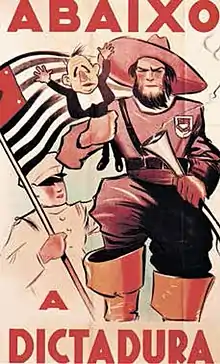 Constitutionalist Revolution recruiting poster, showing a Bandeirante with dictator Getúlio Vargas, in his hand.
Constitutionalist Revolution recruiting poster, showing a Bandeirante with dictator Getúlio Vargas, in his hand.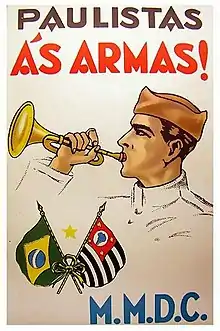 Paulista propaganda poster showing the flag of Brazil and São Paulo.
Paulista propaganda poster showing the flag of Brazil and São Paulo. Convocation poster for Paulista volunteer nurses.
Convocation poster for Paulista volunteer nurses. Rebel troops.
Rebel troops. Loyalist soldiers in combat under machine gun fire.
Loyalist soldiers in combat under machine gun fire. Rebel soldiers entrenched in the outskirts of Amparo
Rebel soldiers entrenched in the outskirts of Amparo.jpg.webp) Loyalist soldiers in combat.
Loyalist soldiers in combat.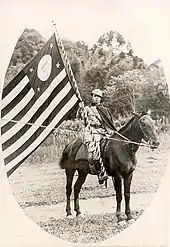 Paulista cavalry volunteer.
Paulista cavalry volunteer. The teacher Maria Sguassábia volunteered in the trenches of São Paulo in 1932.
The teacher Maria Sguassábia volunteered in the trenches of São Paulo in 1932. Brazilian loyalist troops, September 1932.
Brazilian loyalist troops, September 1932. Soldiers from São Paulo photographed by Claro Jansson in Itararé.
Soldiers from São Paulo photographed by Claro Jansson in Itararé. Armored tractor called "FS-6" during the Constitutionalist Revolution of 1932.
Armored tractor called "FS-6" during the Constitutionalist Revolution of 1932. Legalist train transporting rebel prisoners of war.
Legalist train transporting rebel prisoners of war..jpg.webp) Loyalist Soldiers in 1932.
Loyalist Soldiers in 1932.
See also
Bibliography
Silva, Herculano. A Revolução Constitucionalista. Rio de Janeiro. Civilização Brasileira Editora. 1932.
García de Gabiola, Javier. 1932 São Paulo en Armas. Historia y Vida 535. October 2012. Barcelona. Prisma Editorial. Planeta.
Hilton, Stanley. A Guerra Civil Brasileira (The Brazilian Civil War). Rio de Janeiro. Nova Fronteira, 1982.
References
- Hilton, Stanley (1982). A Guerra Civil Brasileira. Rio de Janeiro: Nova Fronteira.
- For the units involved see García de Gabiola. For the strength of the units see both Hilton and Garcia de Gabiola
- See Hilton and García de Gabiola
- See both Hilton and García de Gabiola.
- See both Hilton and García de Gabiola. The calculation of the 4.4 cartridges has been made by Garcia de Gabiola
- See García de Gabiola
- Stanley Hilton. A Guerra Civil Brasileira. Río de Janeiro. Nova Fronteira, 1982.
- Javier García de Gabiola. 1932, Sao Paulo en Armas. Historia y Vida 535. 2012
- See both Hilton and García de Gabiola for troop strength, Silva for details of the operations, and Garcia de Gabiola for a summary of them
- See both Hilton and García de Gabiola for troops strength, Silva for details of the operations, and Garcia de Gabiola for a summary of them and for military units
- See both Hilton and García de Gabiola for troops strength for the gen. Waldomiro Lima, uncle of the Getulio's wife, Darcy, Silva for details of the operations, and Garcia de Gabiola for a summary of them and for military units

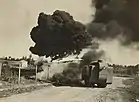
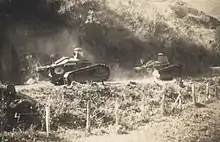
.jpg.webp)


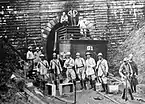
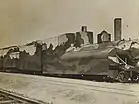
.jpg.webp)
